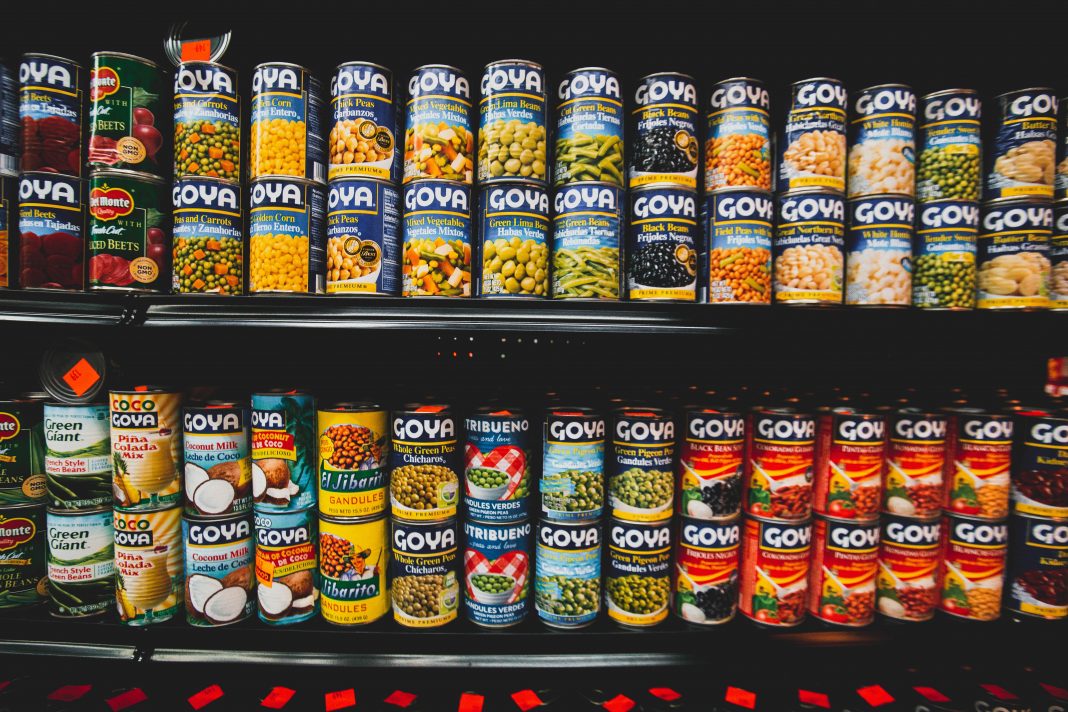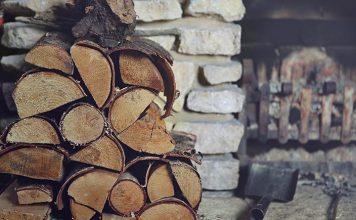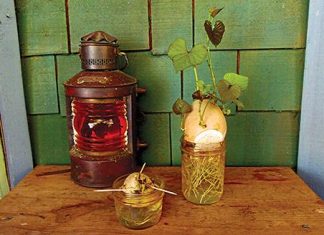| Issue #155 • September/October, 2015 |
I am always trying to come up with different ways to utilize the small space I have to store food. Then there is the problem of rotating my stored goods. I typically keep a variety of canned foods on hand at all times and it can be difficult to make sure I follow the “out with the old, in with the new” rule.





So I decided to make a rotating can rack. I chose this particular design because of the minimal floor space it requires, since this hangs vertically on the wall.
I made these racks to fit the wall space I had available. I chose to make four smaller racks instead of a large one. I did this due to my personal storage needs. This particular rack holds 17 cans in each of the vertical rows and one shelf on the end holds 16 tuna cans. This design is pretty simple; you can choose any type of wood you desire. We had most of the lumber on hand, but we did have to purchase some from the local lumber yard.
These racks can be made to fit your available space. I have made three of these so far, all placed on the same wall.
Building the racks
Materials needed:
- plywood (I used OSB board 7/16″ 4’x8′) the size depends on how large you are going to make your rack. I had a 4’x8′ sheet and had plenty left over to make a second rack.
- 1″x4″x8′ the number of these depends on how many rows you are installing
- 1″x2″x8′ again, the number will depend on the number of rows
- 2’x4′ a scrap piece works fine for this. You only need about 6 inches or so.
- handful of screws (I used 1½” drywall screws I had lying around)
- drill
- power saw
- tape measure
- pencil
First off, you need to check your walls for studs and make sure you are able to attach the can rack into the studs.
As shown in Picture 1, the OSB board is cut to 48″ tall and 30″ wide. The bottom baseboard is simply a piece of OSB board cut to 6 inches deep and 30 inches wide. I attached the bottom baseboard from underneath.
In Picture 2, I cut the 1×4 boards to match the length of the OSB board 48 inches. I cut six of these for this particular rack. I attached the cut 1x4s on the outer edges first. These I then placed flush on the inner edge of the OSB board. The remaining 1x4s I placed vertically at 4½-inch intervals.
I usually do a test run at this point just to make sure the cans are going to roll nicely. This is a good time to fix any mishaps.
Next, I cut some 1x2s to place vertically along all of the vertical 1x4s. The placement of the 1x2s will act as supports to each row so the cans don’t fall out. The 1x2s are cut to 32 inches, then attached along the 1x4s. The 1x2s on the far left and far right of the rack are placed on top of the 1×4, flush with the outer edge. The rest of the 1x2s are placed so that there is about ½” on either side of the 1×4. I also attached a 1×2 along the bottom baseboard to act as a stopper so all the cans don’t roll out at once. The completed rack in Picture 4 may help put this step into perspective.
The next step involves placing the horizontal supports at the top and bottom of the rack. I used 1x4s for this as well. I cut two 1x4s to 30 inches and placed the first one about 3 inches from the top of the rack. This allows a bit of space for your hand when placing cans in from the top. I placed the second 1×4 4½ inches from the bottom of the rack. This allows for only one can to roll out at a time.
I then fashioned some wedges out of my scrap piece of 2×4, as you can see in Picture 3. I only have a power saw, so I used a square/straight edge to mark triangular-shaped pieces on the 2×4, then simply cut them. I attached these wedges to the bottom of each row with screws inserted from the bottom of the rack. One screw per wedge worked just fine.
I wanted to switch up the design a bit on the third and final rack that I made, so I added four horizontal shelves in the last column. I cut three 6½” 1x4s and placed these 12 inches apart. I used these little shelves for some of my odd-shaped, smaller cans. Tuna, tomato paste, and Vienna sausages all fit nicely on these shelves.
Depending on how you want your final product to look, you can paint or stain your rack now. Or, you could have done this prior to putting all of the pieces together. I chose to leave mine au naturel to match my other shelving systems in my storage room.
When hanging these racks, you need to make sure you attach them to at least one stud two is better. We had a bit of difficulty with this, since our studs aren’t placed on two-foot centers. But our racks are holding great just being attached to one stud.
These racks filled up quickly with cans. And I love having freed up plenty of shelf space to store more of my home-canned goods!















It occurs to me that you could also make your racks movable if they are hung from above. Move the rack over in front of the other that is hung unmovable on the wall. Wow, I don’t how, but it could be done!
Did you just screw straight into the stud to secure?
Thanks! I have been searching for instructions for making this can rotation system. Thanks again!